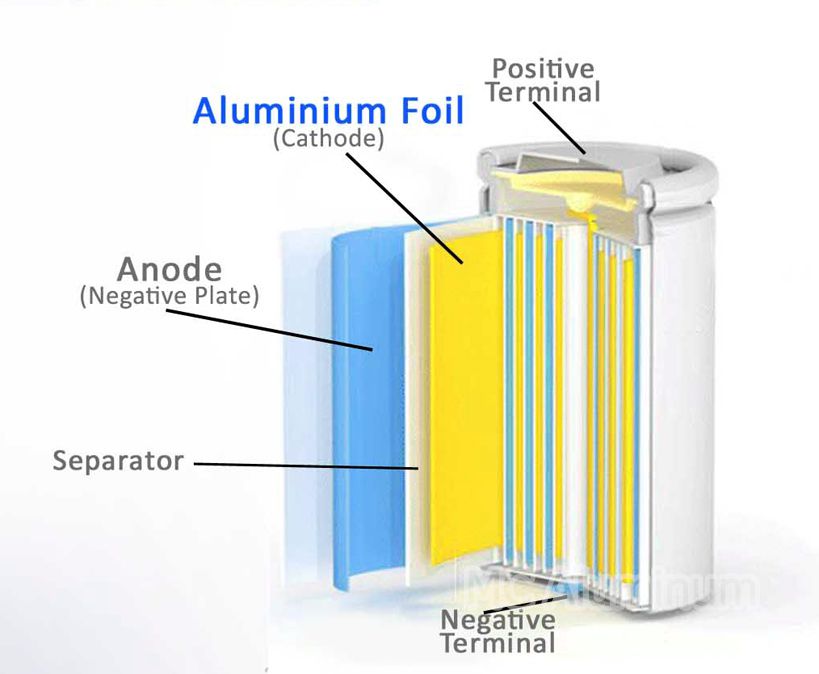With the continuous expansion of the lithium-ion battery market, it has also promoted the rapid development of the copper and aluminum foil industry. Copper foil is used as a negative electrode current collector, and aluminum foil is usually used in lithium-ion batteries as a barrier layer for positive electrode current collectors and soft-packed aluminum-plastic films. In order to ensure the stability of the internal current collector of the battery, the purity of both aluminum foil and copper foil is required. More than 98%. The aluminum foil alloys currently used for the positive electrode of lithium electronic batteries are 1060, 1070, 1235, etc., with thicknesses of 0.01 to 0.05mm and states of O, H14, H24, H22, and H18.
On the one hand, the battery positive electrode foil is the current collector electrode, and on the other hand, it is the carrier of the lithium battery positive electrode material, that is, the lithium battery material must be coated on it. Battery aluminum foil is an important raw material for lithium battery production. Battery foil belongs to the pure aluminum series and usually adopts continuous casting and rolling process.

What is the reason for using the positive electrode as the positive electrode current collector of lithium battery?
1. Pure aluminum foil has good conductivity and soft texture, which can meet the conductivity and softness requirements of the positive electrode material of lithium batteries, and will not cause problems such as brittle fracture during winding.
2. Aluminum foil has stable performance. Aluminum reacts easily in the air, forming a dense aluminum oxide film on the surface, which can prevent further reactions of aluminum, and this oxide film plays a very good protective role for aluminum in the electrolyte.
3. The potential of the positive and negative electrodes of lithium batteries determines the use of aluminum foil for the positive electrode and copper foil for the negative electrode, not the other way around. The positive electrode potential is high, and the oxide layer of the copper/nickel foil is loose and is easily oxidized at high potential. The oxidation potential of aluminum is high, and there is a dense oxide film on the surface of the aluminum foil, which also has a better protective effect on the aluminum material inside.
4. Aluminum resources are abundant and aluminum foil is cheap, which can reduce battery manufacturing costs.
The 1xxx series pure aluminum foil produced by MC Aluminum is widely used in aluminum foil for lithium-ion batteries. The product has a uniform surface color, clean, flat shape, and no obvious oil stains; strength > 180Mpa, elongation > 1.5%, and wettability > 32 dyne , which can effectively improve the adhesion between active materials and current collectors and reduce manufacturing costs.
